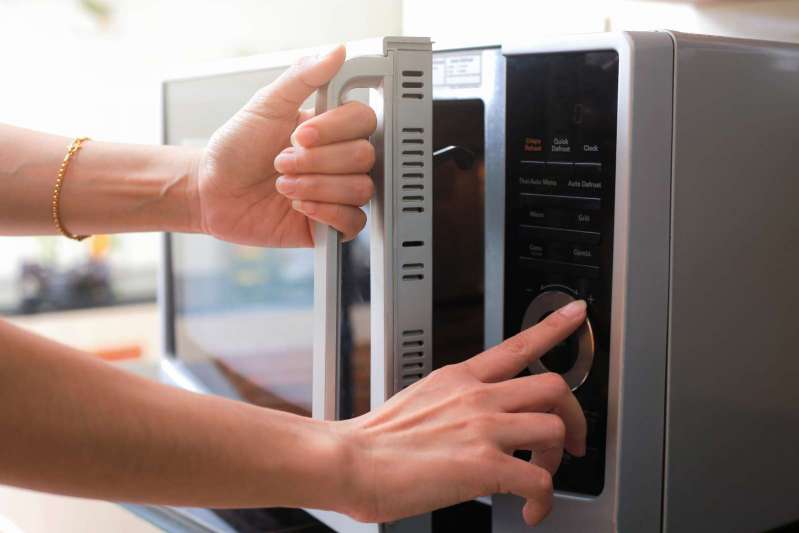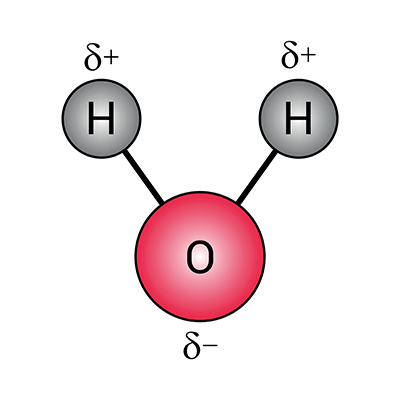
The microwave oven is a common accessory in our kitchens and is used to quickly heat food. Few people know that it can also be used in home and industrial sterilization processes thanks to its particular operating principle.
But what principle are we talking about?
How the microwave oven works
What are microwaves
Microwaves are high-frequency electromagnetic fields. Their peculiarity is the fact that they are not constant, but that they constantly oscillate. If we plot their fluctuations in a graph, we see a typical "roller coaster" trend, with peaks followed by sharp decreases.
It is thanks to these oscillations that microwaves allow food to be heated.
This property was discovered in a totally unexpected way...
Invention of the microwave oven: from the navy to the kitchen
In 1945, the American engineer Percy Spencer was working in the vicinity of a magnetron, a device that produces microwaves, in a research program for more efficient radar systems for the United States Navy. To his surprise, he noticed that a nearby piece of chocolate had melted. Evidently, the microwaves had warmed him up!
After this insight, Spencer began testing the magnetron to heat food. After a long series of improvements, starting from 1947 the first microwave ovens were put on the market.
How a microwave is made: the general scheme of operation
Physically, the microwave oven is nothing more than a Faraday cage with an internal magnetron.
The Faraday cage is a container that allows to shield internal or external electromagnetic radiation. Perhaps you have seen on TV or on Youtube some spectacular performances in which electric current generators launch lightning towards suitably screened cabins where a spectator is often present. Well, it's not about cinematic tricks! Lightning strikes are real electrical discharges and the cabins are Faraday cages.
The microwave oven is exactly the same, with one big difference: the source of electromagnetic radiation is internal and not external to the Faraday cage. In this case, the viewer can calmly watch his dinner from outside while a real electromagnetic storm is underway inside the microwave!
How do microwaves heat food?
Once a microwave oven is turned on, the high frequency electromagnetic fields interact with the water molecules present in the food.
Water is a very common compound in food, but with very particular physicochemical characteristics, polarity, being one of these.
 The water molecule is made up of two hydrogen and one oxygen atoms, which are respectively positively and negatively charged. The charges balance, creating an easily influenced electromagnetic balance. In fact, when subjected to electromagnetic fields, the water molecules orient themselves towards the pole of the magnetic field. In practice, they behave like a compass when there is a magnet nearby.
The water molecule is made up of two hydrogen and one oxygen atoms, which are respectively positively and negatively charged. The charges balance, creating an easily influenced electromagnetic balance. In fact, when subjected to electromagnetic fields, the water molecules orient themselves towards the pole of the magnetic field. In practice, they behave like a compass when there is a magnet nearby.
In the case of microwaves, we have said that the magnetic field has a high frequency, and therefore varies very rapidly. Consequently, the water molecules change direction very quickly. It is a bit like moving a magnet near and far from the compass at such a speed as to make it oscillate extremely quickly: 2.45 billion times in a single second!
The rapidity of the movement of water molecules leads to continuous friction between them, causing an increase in energy and therefore the release of heat. By contact, heat is transmitted to other food molecules, such as sugars or lipids.
This explains two curious phenomena that perplex people who use a microwave for the first time:
- the plates and cups that have just been removed from the oven are still cold, or barely warm, while the food is very hot. This is because foods contain water molecules that heat up with microwaves, while containers do not.
- dishes that contain liquids or semi-liquids, such as jam croissants, heat up much more quickly inside than outside. This is due to the fact that the microwaves act on the moist core and not on the dry part.
What materials can be put in the microwave oven?
In the natural world we are not used to the effect of microwaves. As a result, we cannot estimate their impact on various materials. Some are essentially inert, while others produce unexpected effects.
In particular:
- porcelain, ceramic and terracotta dishes are insensitive to microwaves, therefore they only heat up when in contact with hot food.
- the glass can be placed in the microwave, as long as it is not crystal. In this case the structure is too unstable and the microwaves could cause it to vibrate until it breaks.
- plastic tends to be resistant to microwaves, but it is always better to use only containers and components declared safe for this use by the manufacturer.
- the paper in normal conditions does not catch fire as it happens in a traditional oven. Greaseproof paper and special microwave papers can be used with peace of mind. Other papers are not recommended due to the potential release of substances hazardous to health.
- metals, being excellent conductors, can create short circuits with the microwave generator, causing dangerous sparks.
Microwave for sterilization: bacteria under a double fire
We have found that microwaves have the power to heat water. This leads to a quick and efficient cooking, but also to an efficient sterilization.
We know that microbes are very sensitive to heat. At temperatures close to 100 ° C they are decimated. At temperatures above 100 ° C they are eliminated. Not surprisingly, heating has been the basis of pasteurization and sterilization processes for over a century.
In the microwave oven, in addition to heat, we also have the effect of electromagnetic waves. These, by acting on the polarity of the water, modify the permeability of the cell membrane. This impairs the ability of the bacteria to feed and carry on the metabolic processes necessary to survive and reproduce.
In short, in a microwave oven, bacteria are attacked by a "double fire":
- the thermal effect, which eliminates them thanks to the increase in temperature.
- the electromagnetic effect, which eliminates them thanks to microwaves.
Homemade microwave sterilization
In recent years, with the spread of this technology, the home use of the microwave for the sterilization of jars for preserves and baby bottles has become popular. It is generally used to fill the containers to be sterilized with water, leaving them for a few minutes in the microwave.
Industrial microwave sterilization
Industrial microwave sterilization focuses mainly on autoclaves. Inside these equipment, temperatures and pressures high enough for the elimination of most of the bacteria are reached. If a microwave generator is added in this process, it will further increase the percentage of bacteria eliminated, thus obtaining a deeper sterilizing effect.
To complete the sterilization process, autoclaves need to monitor the temperature and pressure parameters. Basically, data loggers must be installed inside them.
Do data loggers work with microwaves?
This was the question of one of our customers who asked us to measure the temperature in a microwave sterilization process.
Before answering, we have examined the problem carefully.
- as for the logger sensor, no problem. Magnetic fields have no effect on its measuring ability.
- microwaves can damage the electronic circuits of the data logger. In addition, the metal could have created dangerous sparks.
There was only one way to remove all doubts: to experiment.
We therefore equipped ourselves with a home microwave oven with a maximum power of 900/950 W and carried out some measurement tests in our laboratories, naturally taking all possible safety precautions!
Test n ° 1. Data logger without protection.
We inserted the data logger into the microwave oven without any protection. Once the magnetron was activated, the strong electromagnetic field did not cause the dangerous sparks as we expected. However, at the end of the experiment, our data logger no longer worked. A sign that it had been damaged by the microwaves.
Test n ° 2. Data logger immersed in water.
We know that water has a strong reactivity to microwaves. This means not only that it heats up easily, but that it also manages to absorb the electromagnetic radiation present inside the microwave oven. This behaviour could be used to shield the logger from radiation.
After the experiment, the logger was still functional. The problem, however, in this case is the application. Immersing and extracting the data logger from the water is in fact rather inconvenient, also taking into account that:
- the water is very hot at the end of the process
- is subject to evaporation and therefore must be changed frequently
- affects the humidity inside the oven
Test n ° 3. Data logger out of the water
To overcome the inconvenience of test n ° 2, we tried to insert the data logger into the oven with water, but without immersing it. In this way the water would have attracted most of the electromagnetic radiation to itself. There would not have been such a strong shielding effect as in the previous case, but the reduction of the radiation would perhaps have been sufficient to avoid irreparable damage to the logger.
At the end of the experiment, the logger was still functional.
Test n ° 4. Data logger wrapped in copper adhesive strips.
We said earlier that the Faraday cage is a container that shields microwaves. So why not put the data logger in a small Faraday cage?
This required the creation of a metal barrier that would reflect the microwaves.
However, we knew that metal can create short circuits, so we took care to minimize the potential problems:
- the minimum necessary quantity of metal has been used.
- the metal sheets have been crumpled to create thousands of reflective micro-surfaces in multiple directions, reducing the average spark size.
At the end of the exposure, the data logger was still functional and had been measuring all the time.
The only problem was the chosen metal: copper is quite expensive. So why not replace it with another cheaper metal?
Test n ° 5. Data logger wrapped in a sheet of aluminium foil.
The choice for this test fell on aluminium: cheap, light and commonly available in sheets. Perfect for creating an anti-microwave armour for the data logger!
The intuition was validated by the data: we verified that the results of this shielding were comparable to copper shielding. Then the wrapped data logger is properly shielded also with a layer of aluminium foil.
By repeating these tests with various sterilization data loggers from our catalogue, the best model for this application turned out to be the MicroW L.
Tecnosoft: from test to solution
The modus operandi we have described so far is not an exception, but it is the daily reality for Tecnosoft, which is always looking for new solutions to measure accurately even when the working conditions of the loggers are difficult.
If you need to monitor a process that takes place in a critical environment, contact us: we will find the right solution!
 Flip through our history
Flip through our history



